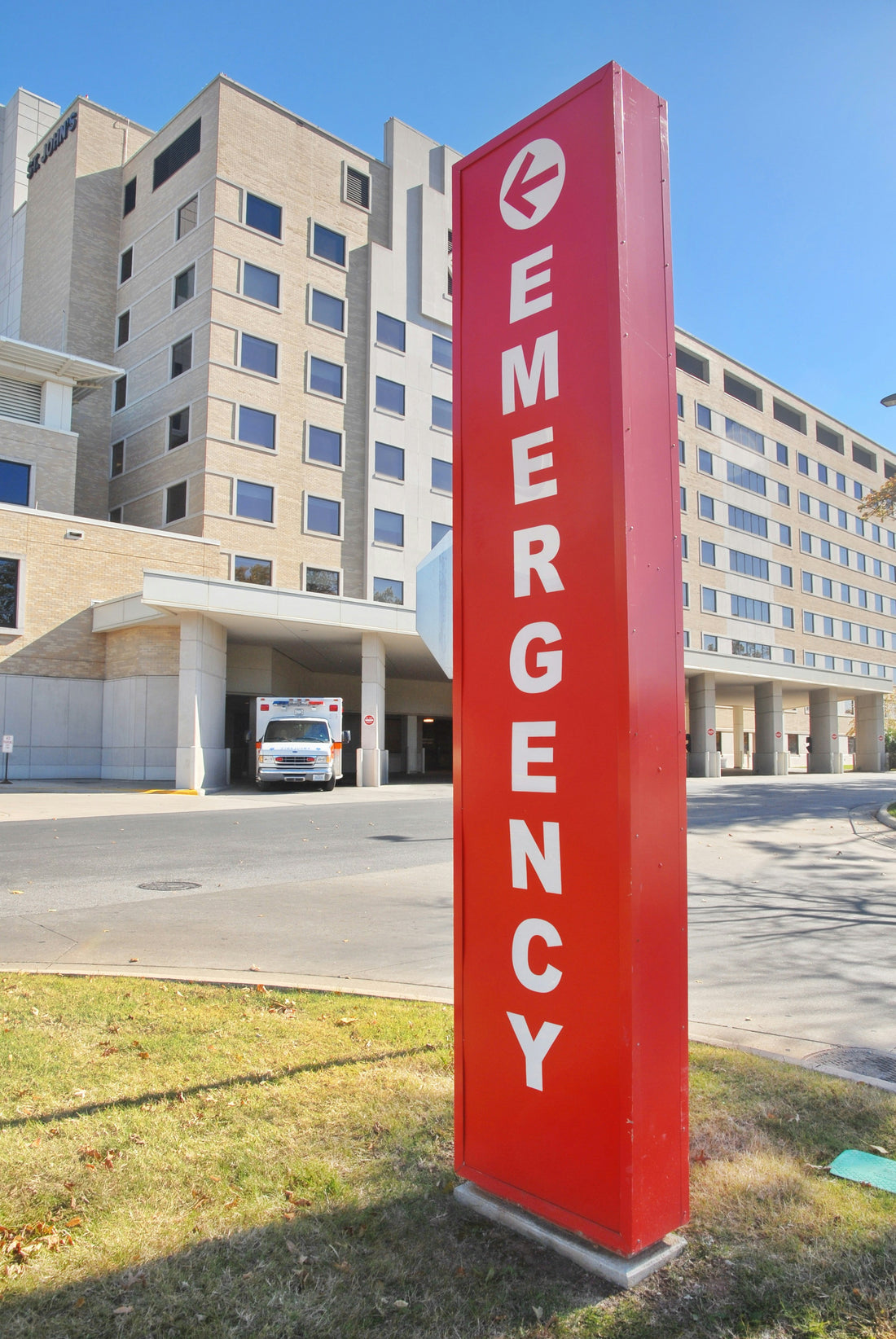
Life threatening situations - real animal emergencies
Share
We are faced with scary situations affecting our pets on a daily basis. While many require quick action and veterinary intervention, some are true emergencies. The purpose of this article is to get the reader, the pet owner, to recognize circumstances that require your pet to be promptly taken to the nearest vet, without hesitation, for potentially life saving treatment.
Gastric dilatation-volvulus, aka Bloat
This is a condition which mostly occurs in large breed dogs. It generally happens shortly after they have eaten, especially large amounts of dry pellets. However, it can happen at any random time of the day. The stomach turns on itself trapping gas inside; and as more gas is produced the condition perpetuates setting various processes in action, until severe cardiovascular shock sets in, shortly followed by death.
Symptoms:
- Swelling around midsection of the dog. Rapid progression of 'bloatedness'. Swelling feels hard to the touch.
- Rapid breathing, panting
- Discomfort - walking around aimlessly.
- Retching without being able to vomit.
- As things progress the dog becomes wobbly and struggles to walk and stand, then total collapse sets in.

Blocked bladder
This is a condition of male cats. Mostly prevalent in young castrated tom cats. Certain commercial diets, in predisposed individuals, causes bladder sludge and stones. If the sludge or stones are passed out of the bladder, there is the possibility of them getting lodged in the urethra, especially in the last portion, which is narrower. This can cause partial or total obstruction of the urethra, causing the cat to be unable to void his bladder.
Symptoms:
- Cat looking uncomfortable and in pain.
- Squatting around the house in an attempt to urinate.
- Passing small amounts/drops of urine, often blood tinged. Or nothing at all.
- Showing signs of distress and pain.
- Vocalizing when squatting and moving around.
- Collapse.
The danger of a bladder that is blocked is that toxins get absorbed and create havoc with the organs resulting in possible impending or long term multiorgan failure. The bladder could also rupture causing immediate death.
Similarly a dog's inability to urinate, while a lot less common, is just as much of a serious situation as in the cat.

Snake bites
This might only affect animals in certain parts of the world. Where I live, this is a real issue that poses a serious threat for our dogs and even some cats. If you see your dog being bitten or you suspect it, please seek veterinary help immediately. Antivenom might help save your dogs life, and it needs to be administered as soon as possible to have the desired effect. It is very important to identify the snake, so if possible take a picture to get knowledgeable people to positively identify it. Different snakes administer different venoms that have various effects on the victim's body.
Possible symptoms:
- Collapse, paralysis. Unresponsive eye reflex.
- Laboured breathing and progressive breathing paralysis
- Localized swelling, bruising
- Excessive and uncontrolled bleeding from bite site.

Heat stroke
This is another condition reserved for the warmer parts of the globe. Brachycephalic breeds and overweight dogs are more at risk. Midday, when the temperatures are the hottest is generally when these incidents occur. Similarly leaving dogs in cars or unventilated areas exacerbates the chances of heat stroke. Exercise in the heat is another predisposing factor.
Symptoms:
- Excessive panting
- Red mucous membranes
- Collapsing hind legs/weakness
- Confusion/seizuring activity
- High body temperature
- Diarrhoea and vomiting

Neurological disturbances
This category includes any abnormality in consciousness. An unconscious, in a coma pet, is an emergency; as is any kind of brain hyperactivity - seizures, hypersensitivity. No matter weather the reason is traumatic, metabolic, toxic or any other.
Possible symptoms:
- muscle twitching
- salivating
- abnormal pupil size
- confusion
- unconscious bladder and/or bowel voiding
- various levels of unconsciousness and unresponsiveness.

Breathing abnormality
If breathing is compromised your pet could be in serious trouble. Any kind of laboured or struggle to get air in or out of lungs is a potential emergency. There are various reasons for breathing problems (heart issues, pneumonia, trauma, cancer to mention a few), however breathing issues of any kind should be taken seriously.
Possible symptoms:
- Rapid breathing.
- Abdominal breathing.
- Open mouthed breathing - cats
- Shallow breathing.
- Gums and tongue turning blue/purple.
- Distress.
- Worst if animal lying down.

Anaphylactic shock
An acute allergic reaction to a sting, bite or ingestion. The reaction happens within minutes of exposure. Any individual, age or breed can be affected.
Symptoms:
- Heaves
- Various degrees of swelling around head and neck. Often merely lips and cheeks are affected, this is fairly safe. However if the swelling spreads to the back of the mouth or around the neck, veterinary help should be sought immediately
- Gurgling sound when breathing.
- Vomition and diarrhoea.
- As condition progresses distress sets in followed by signs of shock.

Dehydration
Dehydration is a consequence of many conditions and occurs when fluids that are lost are not being replenished successfully. A combination of a lack of acquiring fluids by inappetence and unwillingness to drink and voiding excess fluids, via vomition and diarrhoea.
Symptoms:
- skin tenting (when skin is lifted from the back of the neck and it remains up i.e. does not return to it's original position)
- tacky mucous membranes
- sunken eyes

Blood loss
Blood loss is difficult to quantify. Often situations look worst that what they are, from a hemorrhaging perspective. Most wounds will stop bleeding if some pressure is applied, if however larger blood vessels are severed the bleeding will not cease. In this situation please put pressure and get to your vet as soon as possible. You can also monitor the situation by keeping track of the colour of the pets gums. The paler, the more blood has been lost.

Dystocia
Parturition can always been a challenge. When things go wrong, the life of the mother and/or puppies and kittens are at risk. Cats deliveries go wrong very rarely, I think I have probably only done 2 cat caesarians in over twenty years of practice. Contrarily dogs are often presented for emergency caesarian sections.
Symptoms:
- Time between puppies can vary between 30 minutes to 3 hours. Toward the end of labour and the mother gets tired, the intervals can increase as she will take rest periods. Anything longer than 3 hours between 2 pups is cause for concern. If there are active contractions with no results, help should be sought sooner.
- Brown or black vaginal discharge
- Bad odour from vulva
- Parts of puppies/kittens protruding without successfully being expelled.
- Excessive bleeding
- Lack of afterbirth (this is usually eaten by the mother, and thus often not seen)

Shock
This is a very common consequence of any traumatic incident or serious illness. It is the collapse of the cardiovascular system causing reduced blood supply to all areas of the body. This can very quickly be fatal or have long enduring and severe consequences. Often, it is this that will cause death in an animal following an accident, rather than the injuries themselves. Shock is a consequence of all of the above and could also occur following less serious conditions.
Signs of shock:
- Shallow, rapid breathing.
- Pale mucous membranes.
- Confusion and/or dizziness
- Weakness and/or collapse
- Vomiting
- Decreased body temperature

Useful clinical parameters
Following are some characteristics that can be used to asses ones pet
Gum colour - this should be a nice pink tone. Pale, yellow, dark red, purple and blue are indications of a serious problem.
Breathing should be inconspicuous - rapid, shallow, abdominal breathing is a sign of trouble.
Temperature - normal temperature of dogs and cats is between 37.5 - 39.2 degrees Celsius or 99.5 - 102.5 degrees Fahrenheit. Too low or too high body temperature is a potential issue.
So, in a nutshell, anything abnormal could be an indication of a possible crisis, and deciding when to seek medical help can be tricky. Thus, I hope that the above will help to make that decision a little easier. The best advice I can give you online is to contact a vet, if necessary, even if it's just to talk and discuss what you are seeing.
Together, let's keep them safe.
Good luck!

